My wife and I recently visited Lisbon as part of a package that preceded our Viking River Cruise along the Douro.
Though we actually had an overnight stay the ground we covered could easily be similarly achieved on a day visit from a visiting cruise ship. The secret to making the most out of a visit to Lisbon lies in having a clear plan and making good use of the Hop On-Hop Off bus services.
Lisbon is the capital of Portugal and is one of the most beautiful and vibrant cities of Europe. It is blessed with a great climate with costs a mere fraction of other European capitals.
Our day started at the Parque Eduardo VII (Edward 7th Park) only because our hotel was on the Avenida da Liberdade. The Park and Avenid are separated by the Marquess of Pombal Square…

…and the view over Lisbon from the top of the park is well worth the effort of reaching the vantage point…
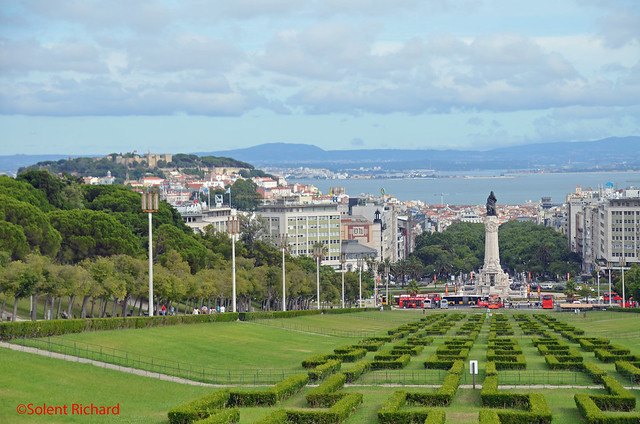
There is a start point for HoHo buses at the base of the Statue to the Marquess of Pombal…
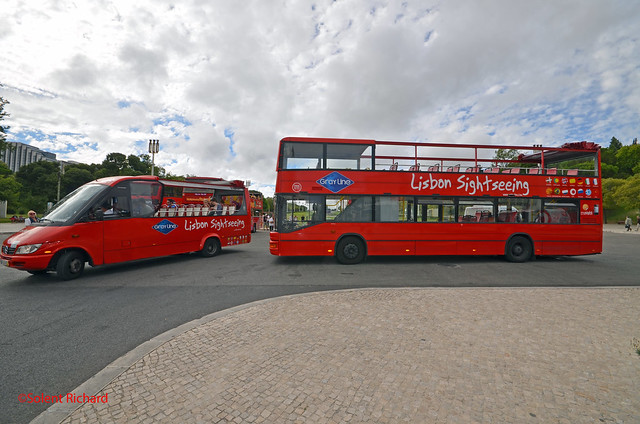
… that includes a stop at the top of Edward 7th Park.
Just for the moment though take another look at the photograph from the top of the park. There, on the upper mid left of the picture, can be seen the Castle of São Jorge. Now a quick zoom in…
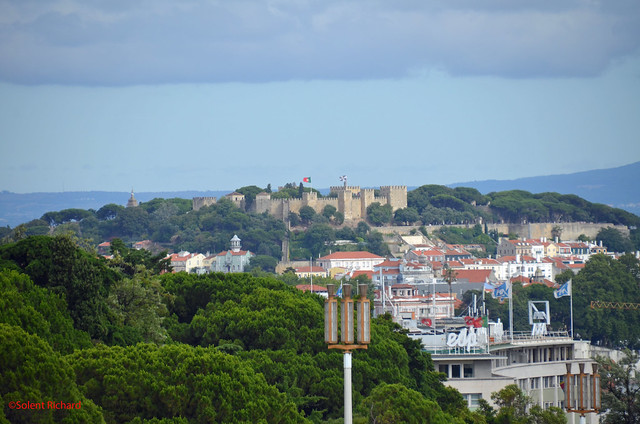
…because the Castle of São Jorge is on our list of places to visit and I thought I would illustrate just how visually effective it is on that hill top.
For the purpose of this guide to Lisbon though I would certainly recommend the CitySightseeing buses and their ‘Red Route’ named ‘Linha Vermelha’, the reason being is that while we were taken to the Belém District on one of our inclusive Viking excursions, I did note that CitySightseeing covered the same route to Belem and back to Praça do Comércio, another landmark central to our visit.
There is plenty to see at Belém, many of the nation’s distinctive buildings and landmarks are located in this area, including Jerónimos Monastery, The Tower of Belém, Padrão dos Descobrimentos ( Monument to the Discoveries), the visually striking war memorial dedicated to soldiers of the Portuguese army who died during the Overseas War of 1961 to 1974, the Monumento Combatentes Ultramar and for those who have an interest in military history, a Museum of Combatants at Fort Bom Sucesso...
The Military Museum

Tower of Belém
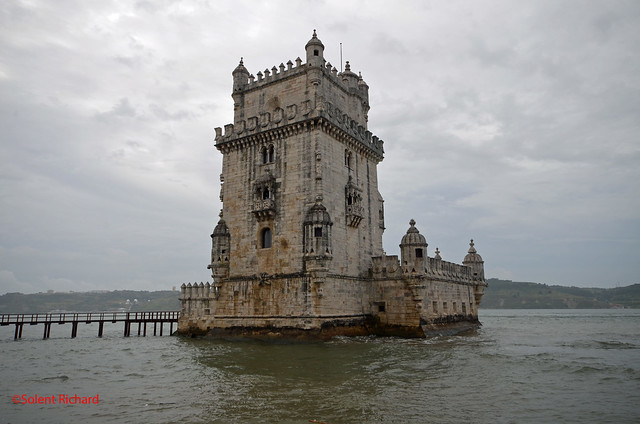
Monumento Combatentes Ultramar

Padrão dos Descobrimentos ( Monument to the Discoveries),

Jerónimos Monastery,

While at Belém two other sites caught my eye. The first was this memorial that celebrates the first aerial crossing of the South Atlantic, which was made in 1922 by the Portuguese Naval aviators, Cago Coutinho and Sacadura Cabral to mark the centennial of Brazil’s independence…

and sitting on the River tagus just east of the Belém Tower the Belém Doca do Bom Sucesso, or Faux Lighthouse. It is not an aid to navigation and does not have a lantern in the faux gallery.

My thanks to fellow blogger Neal Abbotsford for enlightening me on the faux nature of this red brick lighthouse.
The ‘Tower of Belém’ and the ‘Padrão dos Descobrimentos’ are of course iconic symbols of Lisbon but the real gem here in Belém is the Jerónimos Monastery or Hieronymites Monastery.
The monastery was designed in a style that later became known as Manueline: a richly ornate architectural design that includes complex sculptural themes incorporating maritime elements and objects discovered during naval expeditions, carved in limestone.
It is now the most prominent examples of this Portuguese late Gothic Manueline style architecture in Lisbon and was classified a UNESCO World Heritage Site in 1983.
The monastery is also a very popular tourist attraction and we were very fortunate to have an English speaking guided tour of its interior and to learn so much of its history.
Examples of the Manueline architecture are well illustrated in the Monastery’s cloisters….

The Monastery also houses the tomb of Vasco da Gama…

Sharing an extended western wing facade with the Monastery is Portugal’s National Archaeology Museum of Lisbon …

Prior to its founding in 1893, by notable archaeologist José Leite de Vasoncelos, the museum wing used to be the dormitory of the monks.
Our visit to the Monastery concluded our time in the district and we headed for Alfama, the oldest district off Lisbon which spreads across the slope between Castle São Jorge and the Tagus River.
Alfama once, during times of Moorish domination, constituted the whole of the city and to this day remains a labyrinth of typically Moorish narrow street and small squares…

*****

As the city eventually spread to the west Alfama became inhabited by the fishermen and the poor, and its condition as the neighbourhood of the poor continues to this day. A fascinating district to meander around, particularly when one discovered this rather quaint pre cursor of the laundrette.

The neighbourhood has however been invigorated with the renovation of the old houses, and an influx of traditional Portuguese restaurants where Fado —Portuguese typical melancholy music—has become a great attraction.

Our visit to Alfama concluded the ‘escorted’ element of our day in Lisbon and once again we relied heavily on another trusted travel guide that we purchased prior to leaving the UK…

Within easy walking distance of Alfama is the Praça do Comércio or ‘Commerce Square’….

*****

Situated right on the Tagus River the square is still commonly known as Terreiro do Paço or Palace Square, because it was the location of the Royal Ribeira Palace until it was destroyed by the great Lisbon earthquake of 1755.
Here are two further views of Praça do Comércio taken later in the afternoon from the Citadel walls surrounding Castle of São Jorge

*****

Lisbon is well serviced with public transport, the main features being a tram system…

and a Metro…

Both the trams and Metro have stations/main stops at Praça do Comércio.
It was now our intention to head for Castelo de São Jorge and our planned route from Praça do Comércio was as follows…

It included the opportunity to see Lisbon Cathedral…

…which to our delight was open …
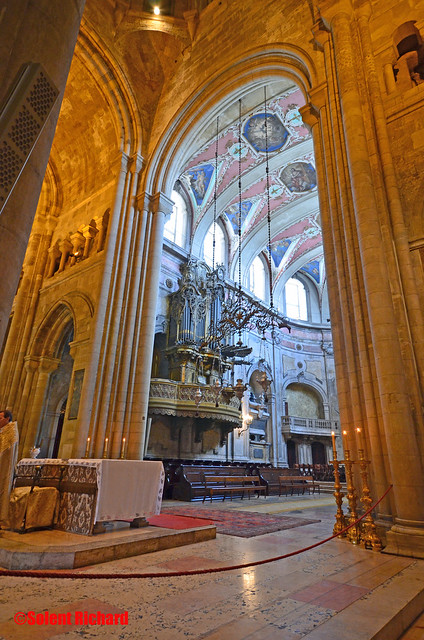
Continuing uphill we eventually arrived at the entrance to Castelo de São Jorge, or at least the entrance to the Citadel.
The main entrance to the citadel is a 19th-century gate surmounted by the coat-of-arms of Portugal, the name of Queen maria II and the date, 1846. This gate permits access to the Citadel’s main square which is decorated with old cannons and a bronze statue of Alfonso Henriques, the Portuguese monarch who took the castle from the Moors.

*****

There is of course an entrance charge and there were lengthy queues at the ticket booth: it is after all a major tourist attraction.But the wait was worth it to wander first around the Citadel walls and then gain access to the even higher castle.
The castle complex consists of the castle itself, some ancillary buildings including the ruins of the old royal palace, gardens, and a large terraced square from which an impressive panorama of Lisbon is visible…

…with great views across Lisbon…

The medieval castle is located toward the northwest corner of the citadel, at its highest point. Castelo de São Jorge…

*****

*****

*****

For those visitors who may find the climb up to Castelo de São Jorge a little daunting, Tram No. 28 from Praça do Comércio stops reasonably close to the entrance road.
We next headed down from the castle in the general direction of our next target visit, the Elevador de Santa Justa, seen here in the centre of the photograph taken from the Citadel…

Dating back to 1905 it connects the lower streets of the Baixa District with the higher Carmo Square. In recent years the lift has become a tourist attraction and its popularity is due to it being the only remaining vertical lift in Lisbon.
It is an impressive piece of engineering and had we not had two more ‘places of interest’ still on our list I would have said a ride was a must. We got pretty close though…
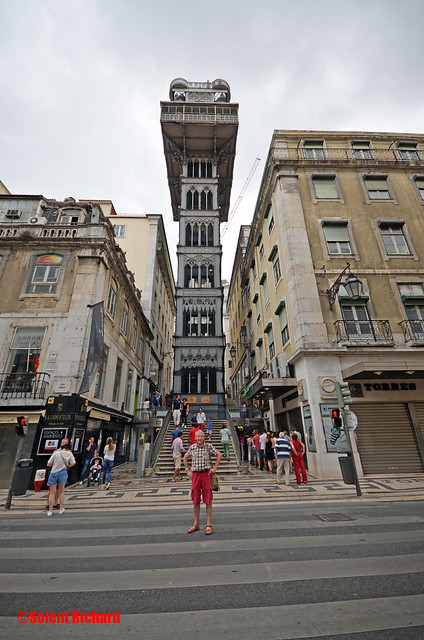
A short walk from Elevador de Santa Justa is Rossio Square. It has been one of its main squares since the Middle Ages, the setting of popular revolts and celebrations, bullfights and executions. Rossio Square is now a preferred meeting place of Lisbon natives and tourists alike.
The centre of the square is dominated by the statue of Pedro IV, a latter day King of Portugal, the National Theatre D. Maria II and bronze fountains….

Our final destination for the day’s visit was a pilgrimage to the Benfica Stadium. For this we caught the Lisbon Metro from the station adjacent to Rossio Square …

…where we took the full stadium tour…
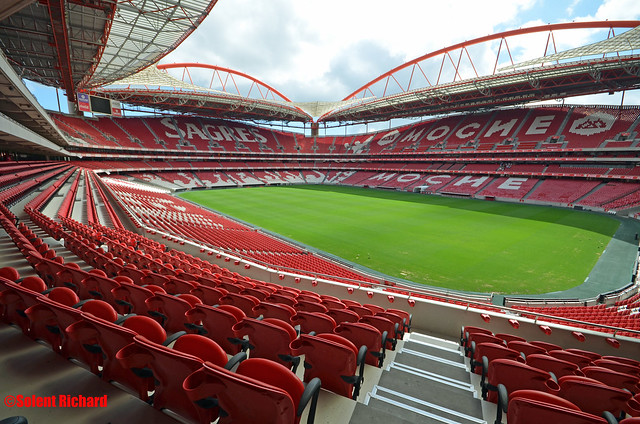
That really concluded our visit for the day. We headed back to our hotel and prepared ourselves for our planned ‘Fado’ dinner and evening back in the Alfama District.
Lisbon is a fascinating city to explore and there is so much to see. We thoroughly enjoyed our day and would very happily return for maybe a more in depth look at some of the places we discovered on this visit. Compared to so many other European capitals it seems so inexpensive, yet has so much to offer. We found the Portuguese people most friendly and helpful.
Our ‘Fado’ Dinner in Alfama turned out to be another excellent dining experience that we will long remember.

Looks lovely Richard. We’re thinking of going during February Half term.